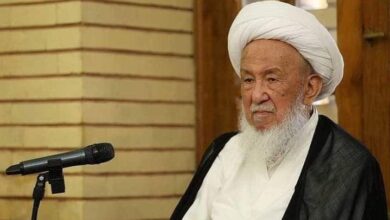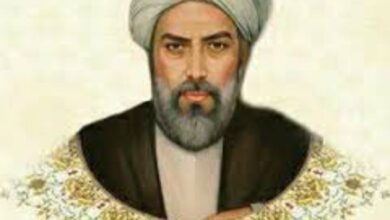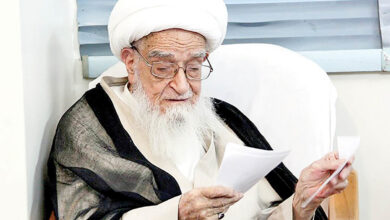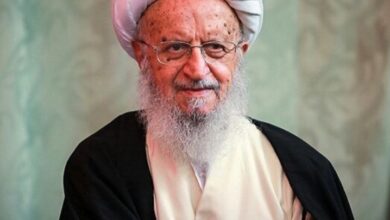Introducing Sayyid Dildar Ali’s critique of mysticism, al-shihab al-thaqib (الشهاب الثاقب), Dr. Athar Abbas Rizvi writes:
“Mawlānā Dildar Ali (1753 – 1820) toed the line of the Safawid Ulama in fiercely opposing sufism. Like them he considered it was a threat to Shi’ism. He wrote a detailed work entitled the Shihab al-Saqib refuting sufi doctrines and condemning the leading sufis.
The principal target of his attack is the Wahdat al-Wujud (Unity of Being) of ibn Arabi. The Mawlānā points out initially the differences between scholars, philosophers and sufis in their approach to Wujud (Being) and Wajib (Necessary Being). It goes on to explain in detail the sufi theory of the Wujud al-Mutlaq (the Absolute). The sufis believe that Necessary Being is the essence of the Absolute Being, the Mawlānā asserts, and that essence is found in all objects.
The Mawlānā summarises the sufi arguments on Wahdat al-Wujud and counters each of them. He also demolishes Haydar Amoli’s proposition concerning it and condemns the views of Sharif Juzjani and Sadru’d-Din Shirazi (Mulla Sadra).
To the Mawlānā, the self-delimitation theory of the Absolute is misleading. He quotes the Qur’anic verses which, according to the sufis, endorse the Wahdat al-Wujud belief and marshalls arguments showing that the sufi interpretations have no relevance to the real meaning of the verses. The Mawlānā gives verses and ahādīs which contradict the sufi views of the Wahdat al-Wujud.
The book also shows that the best description of God and His Attributes is available only in the sayings of the Imams of the Prophet’s family. According to them, God is omnipresent by His own essence and He demonstrates His essence by His essence and not through worldly objects.
A chapter of the work deals with the definition of kashf (sufi revelations) and asserts that knowledge obtained through this process was not necessarily correct. Kashf did not discriminate between truth and falsehood and so could not be made the basis for a final decision. If it could, the past-masters of kashf would have been infallible. A section of the chapter points out the faults of eminent sufis starting with ibn Arabi (1165 – 1240). It quotes the correspondence between ibn Arabi’s supporter, Abdur-Razzaq Kashi, and ibn Arabi’s opponent, Ala’ud- Dawla Simnani, and refutes the statements made by his followers, including those of Haydar Amoli (1319 – 1385).
The mystic Hasan Basri (641 – 728) is accused of introducing anti-Islamic monastic practices into the faith. According to the Mawlana, the Imamiyya works did not justify Sayyid Haydar Amoli’s statement that Hasan Basri was one of Imam Ali’s most eminent disciples.
Section three of the same chapter accuses Sufyan Sawri of hostility to Ahl-i bayt and blames him for disseminating many baseless ahadis. The famous utterances of Abū Yazid Bistāmi (d. 874 or 877) such as “Glory be to me. How great is my Majesty” (سبحانی ما اعظم شانی) are condemned as heretical by the Mawlānā and Abū Yazid is described as a propagator of theories supporting hulul (infusion of God into a creature) and ittihad (unification of the Divine and human nature).
He quotes Sayyid Murtaza ar-Razi who, comparing Abdullah ibn Saba with Abū Yazid, wrote that it was surprising that the Sunnis condemned Abdullah ibn Saba because he attributed Divine attributes to Imam Ali ibn Abu Talib, but raised no objections against Abū Yazid who thought himself superior to God. Referring to Abū Yazid’s services to Imām Ja’far as- Sadiq, the Mawlānā says that these did not reduce the weight of his sins.
He reiterates that the respect shown by authors such as Qazi Nūruʻllah Shustari (1549 – 1610) and Bahā’u’d-Din ‘Amili (1547 – 1621) to some sufis did not indicate that they supported the Wahdat al-Wajid doctrines. The section on Abū Yazid also condemns Mansur al-Hallāj (killed 922).
There is another section devoted solely to Mansur in which he is castigated as a zindig (believer in a Magi sect), an heretic and an infidel.
In the section dealing with Ghazali (d. 1111), the author states that he was a bigoted Sunni whose life-mission was to strengthen enmity towards Ahl-i bayt. The Mawlānā remarks that Ghazali’s defence of Yazid was preposterous and showed that he had no respect for Imam Husayn. His assertion that the Shi’i faith was false was based merely on personal kashf and flimsy arguments.
Shaykh Abdu’l-Qadir Jilani (d. 1166) hated the Shi’is even more deeply than his predecessors, claims the Mawlānā. The Shaykh fervently believed that the tenth of Muharram was not a day of mourning but of rejoicing, for, before the advent of Islam, it had proved an auspicious day for some of the early prophets. According to Shaykh Abdu’l-Qadir, A’isha was superior to all other women and the Shi’i beliefs resembled those of the Jews.
In the section on Rumi, the Mawlānā quotes verses from his Masnawi to show that Rumi did not discriminate between Islam and infidelity and that his similes and metaphors were sacrilegious. The Mawlana continues that the poetry of ‘Attar, Sanā’i and other sufi poets was heretical and irreligious.
The last but one chapter condemns the mystical practices of sufis and accuses them of violating the basic principles of Islamic teachings. The sufi meditational postures, music, ascetic exercises and love affairs with young boys are, according to the Mawlānā, unlawful. He claims that their practices of wearing woollen garments and loud and silent zikr, the system of bay’a and the presentation of khirqa (sufi robes) are acts of perversion and apostasy.
The last chapter deals with various sufi orders which, in the Mawlānā’s opinion, are totally profane, blasphemous and inculcate materialism and licentiousness.” (1)
Further reading and manuscript download:
The lightening strike: al-shihab al-thaqib by Sayyid Dildar Ali Nasirabadi – Dr. Sajjad Rizvi
Brief biography of Ghufran Ma’ab
Sayyid Dildar Ali Naqvi Naseerabadi, also known as Ghufran-Ma’ab, (1753 – 1820) was a Shia theologian and jurist of India. Born in the village of Nasirabad, Raebareli, India, he got his early education in his home town. He received his higher education from Sayyid Ghulam Husayn Dakhini Ilahabadi, Mawlawi Haydar Ali Sandilawi and Mawlawi Babu’llah of Raebareli. Most of his teachers in India were Maturidiyya Hanafis. He studied astronomy under a renowned scholar of that time, Allama Tafazzul Hussain Khan Kashmiri. (2)
Like other Shia intellectuals of the time, Mawlānā Dildar Ali became an akhbari and a rationalist as he greatly admired the Fawaid-i Madaniyyaz by Mulla Muhammad Amin Astarabadi which endorsed this stance. In 1779, Mawlānā Dildar ‘Ali, financed by Mirzā Hasan Rizā Khān, left for further studies in Iraq and Iran.
The Mawlānā was unable to accept the usuli theory of ijma’ (consensus). He supported the akhbāri position that it was meaningless to consider religious questions finally decided on the basis of ijma’ or a unanimous decision by a number of qualified scholars. The akhbari belief that such questions could never be finally settled appeared true to him.
At Najaf he called initially on Sayyid Muhsin Baghdadi and told him that the book Fawa’id-i Madaniyya had converted the Indian Shi’a intellectuals to the akhbari point of view and even he himself was confused. Sayyid Muhsin replied that ignorance of the usul theories was responsible for the popularity of the akhbāri traditions. The Sayyid then gave him the Fawaid al-Makkiyya by Nūru’d-Din ‘Ali bin Husayn (d. 1658).
Mawlānā Dildar Ali then called on Shaykh Ja’far Najafi, the author of Kashful-ghita. They too discussed the problem of ijma’ but the Mawlānā’s doubts and anxieties remained unresolved. From Najaf the Mawlānā moved to Karbalā. There he studied under Bāqir Bihbahāni, the author of the commentary on the Istibsār and under Sayyid ‘Ali Tabātabā’i. The libraries in Karbalā contained a large number of usuli and akhbāri works and this prompted the Mawlānā to study the problem thoroughly. His intensive reading convinced him that Mulla Muhammad Mu’in Astarābādi, the author of Fawaid-i Madaniyya, had condemned the mujtahids unjustly. His mental satisfaction made his studies meaningful.
At Karbalā he was also one of Sayyid Mahdi Shahrastāni’s students. At Najaf his teacher was Bahru’l-‘Ulüm Aqā Sayyid Muhammad bin Murtazā bin Muhammad al Hasani al-Husayni, known as Mahdi Tabātabā’i Burūjardi. Later on he visited Mashhad and studied under Sayyid Mahdi bin Sayyid Hidayatullah Isfahāni. From Mashhad he returned home with certificates of ijtihad.
Back in Lucknow, the first Friday congregational prayer was organised by the prime minister Hasan Riza Khan in his own palace on Friday, 12 May 1785. This was the anniversary of Imām ‘Ali’s birthday. On 27 Rajab, the anniversary of Prophet Muhammad’s call to the Prophethood, the Friday congregational prayers were held in public. The Mawlānā led the prayers and gave a sermon on historical, ethical and religious topics.
Mawlānā Dildar ‘Ali’s sermons and teachings raised the deteriorating ethical standards of the Shi’a aristocracy in Awadh. He strengthened the Shi’a intellectual traditions and stimulated the production of scholarly religious works. The Mawlānā’s own writings can be divided into six categories:
1. Books relating to the refutation of the akhbāris;
2. Works discussing the basic principles of the Shi’a faith and jurisprudence;
3. Books relating to the history of the Imāms and the promotion of the mourning ceremonies of Muharram;
4. Glosses and commentaries on classical text books;
5. Anti-Sufi literature;
6. A refutation of the Sunni condemnations of the Shi’as aroused by the Tuhfa-i Isna Ashariyya by Shah Abdu’l-Aziz Dehlavi.
At his suggestion Nawab Asafu’d-Dawla built a canal in Karbala and financed the rebuilding of the Imams’ tomb there. The Nawab and his successors also sent liberal gifts to the seminaries, students and deserving people at Karbala, Najaf and other holy Shi’a centres in Iraq.
Mawlānā Dildar Ali’s sons and disciples were also pious, dedicated scholars and teachers. The Shi’as considered them the undisputed leaders of the community.
On 8 March 1820, Mawlānā Dildar Ali made his eldest son his successor. The Mawlānā died in the night of 2 May 1820. His body was buried in his Imambara at Lucknow. He was given the title Ghufran Ma’ab (he who has taken refuge in Divine forgiveness) to show respect to his memory. (3)
Sayyid Athar Abbas Rizvi – a responsible historiographer
Prof. Sayyid Athar Abbas Rizvi (1921–1994), a modern scholar of India’s islamic history, earned his PhD in 1949. He started his academic career from Aligarh Muslim University. Later he joined the Department of Asian Civilizations at the Australian National University, Canberra in 1967, where he worked until 1986. He was elected a fellow of the Australian Academy of Humanities in 1969. In 1972, he also joined Jawaharlal Nehru University as a visiting faculty. He authored many well cited and widely published books on medieval Indian history. He died in Mashhad, Iran and his body was laid to rest within the precincts of the Shrine of Imām Ali Reza (PBUH). (4)
References:
2. Rizvi, “A Socio-Intellectual History of Isna Ashari Shi’is in India”, Vol. 2, p. 228, Ma’rifat Publishing House, Canberra, Australia (1986).
3. Rizvi, “A Socio-Intellectual History of Isna Ashari Shi’is in India”, Vol. 2, pp. 128 – 139, Ma’rifat Publishing House, Canberra, Australia (1986).



